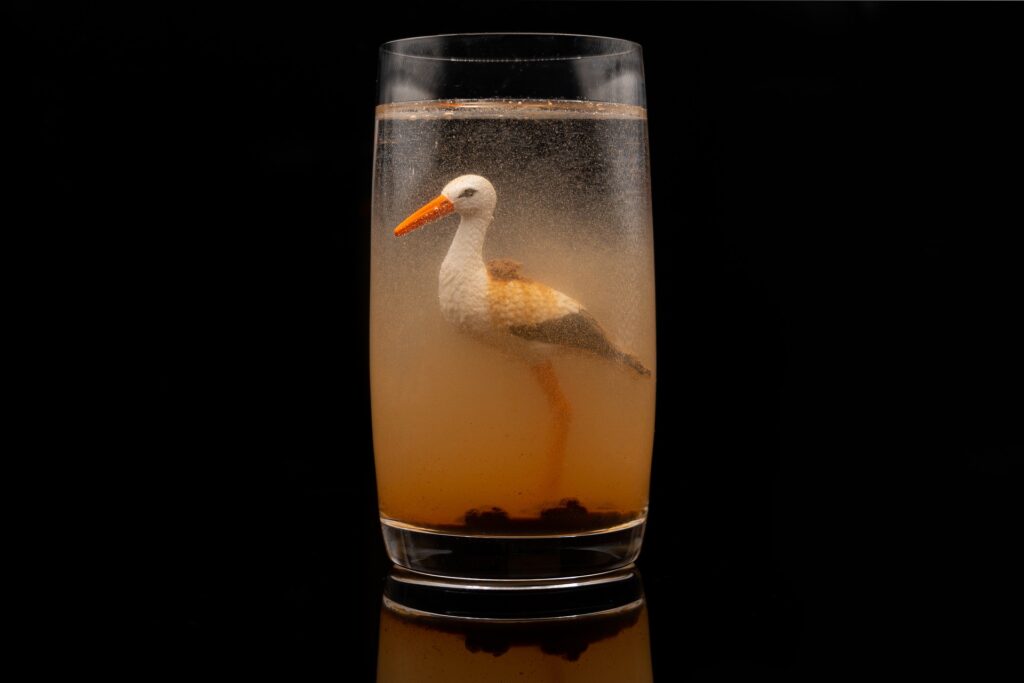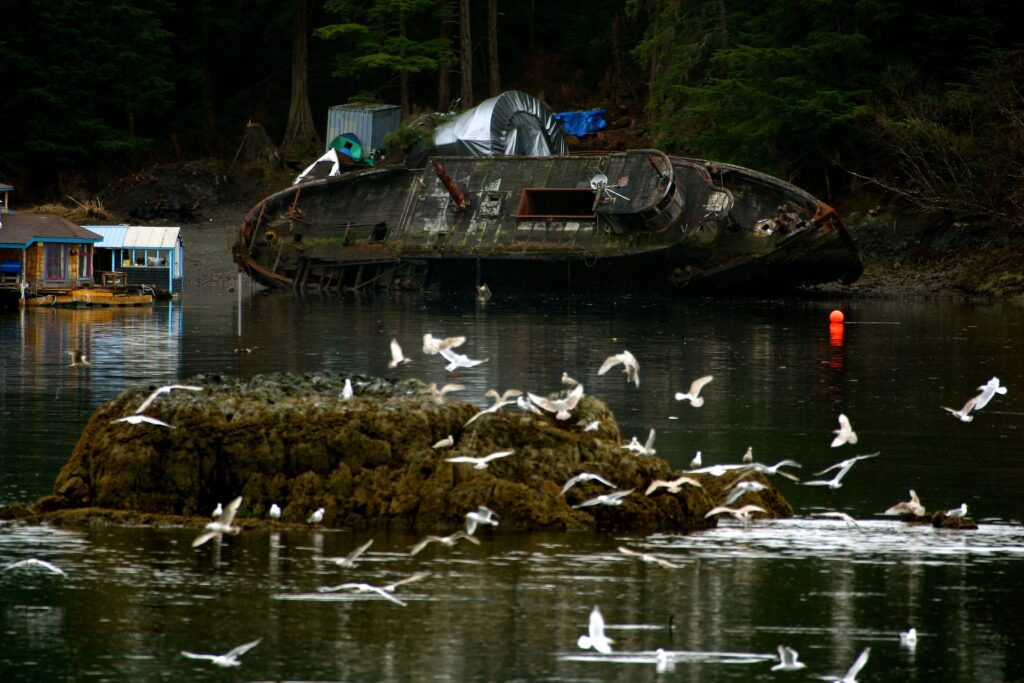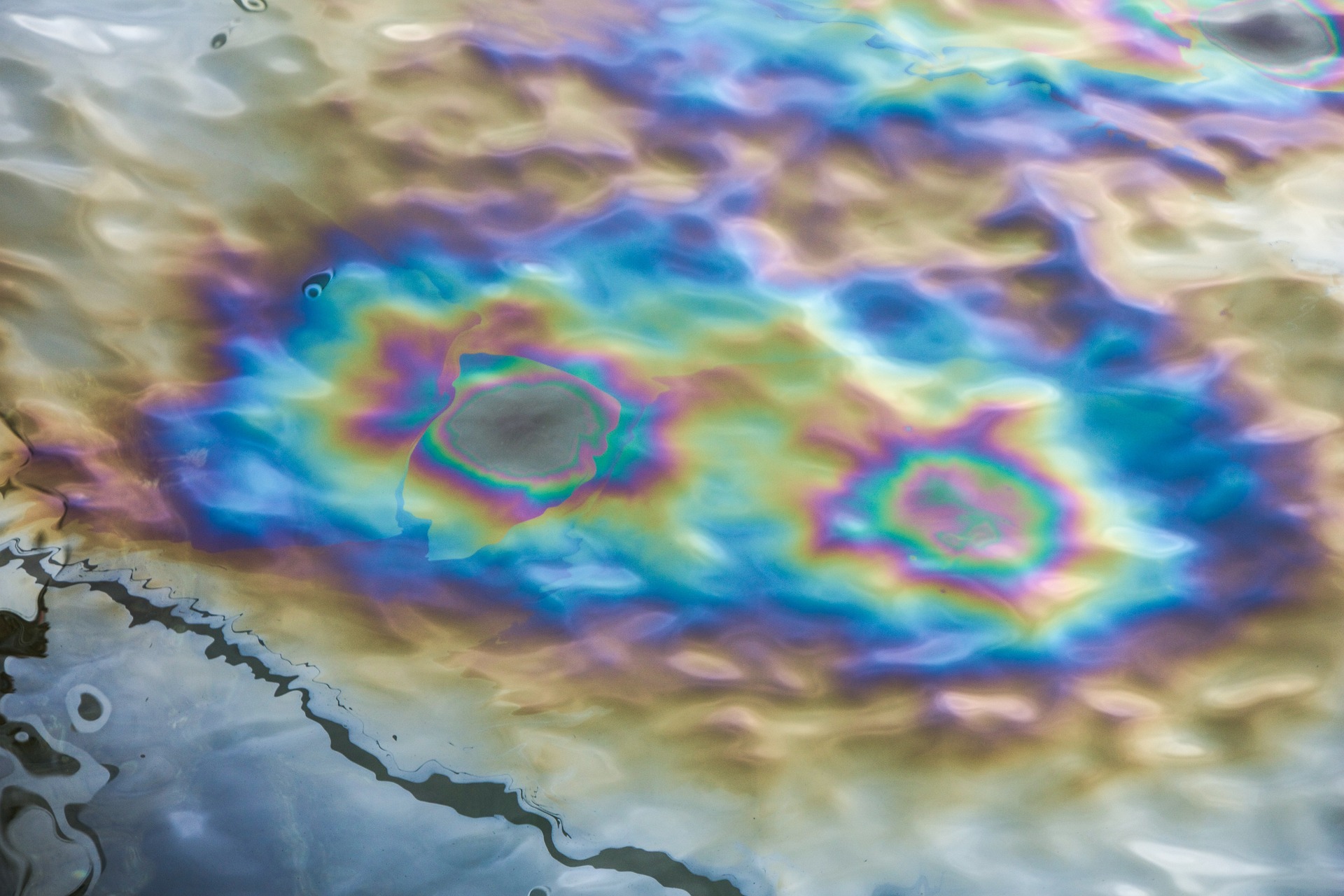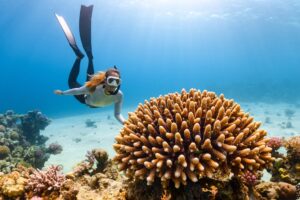Oil spills have devastating effects on marine life, causing immense harm to the delicate ecosystems that thrive beneath the ocean’s surface. When oil is unintentionally released into the ocean, either through accidents or illegal dumping, it can have a far-reaching impact on the health and survival of various marine species. So, how do oil spills affect marine life? From suffocating fish and birds to poisoning plants and destroying habitats, the consequences of oil spills are dire and require urgent attention to mitigate their destructive consequences. Let’s explore the various ways oil spills affect marine life and the potential solutions to minimize their damage.
How Do Oil Spills Affect Marine Life: Contamination of Water
Oil spills have the potential to cause significant harm to marine environments, leading to detrimental effects on water quality. When oil is released into the water, it has a tendency to spread quickly, forming large slicks and creating extensive contamination. These spills can occur as a result of accidents during oil extraction, transportation, or storage. Once the oil enters the water, it can have devastating consequences for marine life.
Oil Spreads Quickly in Water
One of the most concerning aspects of oil spills is how rapidly the oil can spread across the water surface. The physical properties of oil, such as its low density and ability to float, enable it to cover large areas in a short amount of time. This spreading increases the chances of exposure to a wider range of marine organisms and ecosystems.
Impact on Water Quality
The presence of oil in water can have severe impacts on its quality. The oil forms a slick on the water surface, reducing the amount of light penetration. As a result, photosynthetic marine plants, such as algae and phytoplankton, struggle to carry out their vital role in producing oxygen and sustaining life in the water. The reduction in oxygen levels can have dire consequences for marine organisms.
Reduced Oxygen Levels
Oil spills lead to a decrease in oxygen levels in the water. This occurs because the oil forms a barrier on the water surface, preventing the exchange of gases between the atmosphere and the water. As a result, marine organisms that rely on dissolved oxygen for respiration, such as fish and invertebrates, face difficulties in obtaining sufficient oxygen to survive.
Difficulty for Marine Organisms to Breathe
Marine organisms that come into direct contact with oil face immediate challenges in their ability to breathe. The oil coats their gills, feathers, or fur, impairing their respiratory functions. Fish can no longer extract oxygen from the water, while seabirds and marine mammals are unable to maintain their insulation and buoyancy due to the oil’s interference with their feathers or fur.
Impacts on Marine Organisms
The effects of oil spills on marine organisms can be profound and long-lasting. Both direct contact with oil and the toxic effects of the oil can cause severe physical damage and disrupt the delicate balance within marine ecosystems.

Check Out Our Top Eco Friendly Product Picks On Amazon Here
Direct Contact with Oil
Marine animals that come into direct contact with oil can suffer physical harm. The oil can stick to their bodies, weigh them down, and impede their movements. This can make it challenging for animals to find food, escape predators, or carry out essential activities for survival. In addition to the physical hindrances, the oil can infiltrate the animals’ bodies through ingestion or absorption, leading to further detrimental effects.
How Do Oil Spills Affect Marine Life: Physical Damage to Marine Animals
The physical damage caused by oil spills can be extensive. Birds are one of the most vulnerable groups, as their feathers lose their natural waterproofing properties when in contact with oil, making them more susceptible to hypothermia or drowning. Similarly, marine mammals and sea turtles may ingest oil while trying to clean their contaminated fur or feathers, causing internal damage, organ failure, and even death.
Toxic Effects of Oil
The toxic compounds present in oil can cause severe harm to marine organisms. These toxic chemicals can disrupt their immune systems, impair their reproductive abilities, and damage vital organs such as the liver and kidneys. The exposure to oil can also lead to deformities, stunted growth, and a decrease in the overall population of affected species.
Effects on Marine Plant Life
Oil spills have detrimental effects on marine plant life, including algae, seagrasses, and coral reefs. These plants are vital in maintaining the health and balance of marine ecosystems, as they provide habitat, food, and oxygen for various organisms. When exposed to oil, these plants can undergo significant stress, inhibiting their growth, photosynthesis, and ultimately leading to their death.
Disruption of Reproductive Cycles
Oil spills can disrupt the reproductive cycles of marine organisms, further impacting their populations. The toxic chemicals present in oil can cause abnormalities in reproductive organs, reduce fertility rates, and affect the development of offspring. This disruption can result in reduced recruitment success and ultimately lead to declines in the affected species.
How Do Oil Spills Affect Marine Life: Behavioural Changes
Oil spills can induce significant changes in the behavior of marine organisms. These changes can have far-reaching consequences for their survival and the overall functioning of marine ecosystems.

Altered Feeding Patterns
Marine animals affected by oil spills may experience alterations in their feeding patterns. The presence of oil can contaminate their food sources, making them unsuitable or unpalatable. Additionally, the physical and physiological stresses caused by oil exposure can lead to changes in appetite, reducing the ability of marine organisms to obtain sufficient nourishment.
Migration Patterns Disrupted
Many marine species rely on seasonal migrations to find suitable breeding grounds, access food sources, or escape unfavorable conditions. However, oil spills can disrupt these natural migration patterns. The oil can act as a deterrent or barrier, interfering with the ability of marine animals to navigate and locate their destination. This disruption can prevent successful breeding, limit access to vital resources, and lead to population declines.
Changes in Breeding Behaviors
The presence of oil in the environment can also impact the breeding behaviors of marine organisms. Some species may delay or abandon their reproductive efforts due to the unfavorable conditions caused by oil contamination. Others may experience reduced reproductive success due to the toxic effects of oil on their offspring or the destruction of crucial breeding habitats.
Loss of Habitat
Oil spills can lead to the loss and destruction of vital marine habitats, such as coastal wetlands, mangroves, and seagrass beds. These habitats serve as nurseries, refuge areas, and feeding grounds for numerous species. When these habitats become contaminated or destroyed, populations of marine organisms can suffer significant declines, with lasting effects on the overall health and diversity of coastal ecosystems.
Reduced Social Interactions
Oil spills can also impact the social interactions and behaviors of marine organisms. Social animals, such as dolphins or whales, rely on communication, cooperation, and social structures for survival and reproduction. The physical and physiological effects of oil exposure can disrupt these interactions, leading to social fragmentation and reduced group cohesion, potentially affecting the long-term viability of these species.
Bioaccumulation and Biomagnification
Oil spills introduce toxic substances into the marine environment, which can accumulate and magnify up the food chain, leading to increased toxicity in top predators.

Accumulation of Oil in Organisms
Organisms exposed to an oil spill can absorb and accumulate the toxic compounds present in the oil. This accumulation can occur through various pathways such as ingestion, inhalation, or dermal contact. Over time, the oil compounds build up in the tissues of these organisms, leading to potentially harmful effects on their health and survival.
Movement of Toxins Through the Food Chain
Once oil enters the food chain, it has the potential to move up through different organisms, with each subsequent predator ingesting a higher concentration of toxic compounds. This process, known as biomagnification, can lead to an increase in the toxicity of the oil compounds as they move up the food chain. Top predators, such as apex predators or large fish, can accumulate dangerously high levels of these toxins, putting them at risk of severe health issues.
Higher Toxicity in Top Predators
The heightened toxicity present in top predators due to biomagnification makes them exceptionally vulnerable to the effects of oil spills. These predators occupy important ecological niches and play crucial roles in the regulation of marine ecosystems. The accumulation of toxic compounds in their bodies can lead to population declines, loss of biodiversity, and disruption of ecological processes.
Impact on Coastal Ecosystems
Oil spills pose a considerable threat to coastal ecosystems, which are highly productive and biodiverse environments. The contamination of shorelines, destruction of habitats, and adverse effects on specific coastal ecosystems such as coral reefs can have long-lasting and detrimental effects.
Contamination of Shorelines
Oil spills often lead to the contamination of shorelines, which are critical habitats for many marine organisms. The oil can cling to rocks, sand, and other substrates, making it difficult or impossible for organisms to inhabit or traverse these areas. The impact on coastal areas may extend beyond the immediate coastline, affecting estuaries, marshes, and other sensitive ecosystems.
Destruction of Coastal Habitats
Coastal habitats, such as mangrove forests, salt marshes, and seagrass meadows, are particularly vulnerable to the destructive effects of oil spills. These habitats provide essential ecological functions such as shoreline stabilization, water filtration, and nursery grounds for juvenile organisms. The oil can smother these habitats, killing plants, and disrupting the delicate balance of these ecosystems.

Adverse Effects on Coral Reefs
Coral reefs, already threatened by various stressors, are highly susceptible to the impacts of oil spills. The presence of oil can suffocate corals, block sunlight from reaching symbiotic algae, and hinder the growth and calcification processes essential for coral reef formation. The destruction of coral reefs not only has severe consequences for the thousands of species that depend on them but also diminishes the natural defenses and protective barriers they provide to coastlines.
Coastal Birds and Mammals Affected
Coastal environments are home to a diverse range of bird and mammal species, many of which rely on the shoreline or nearby waters for nesting, feeding, or migration. Oil spills can have devastating effects on these species, coating their feathers or fur, impairing their flight or insulation abilities, and causing long-term harm. Contamination can also impact the availability and quality of food sources, leading to reduced breeding success and population declines.
Long-Term Effects
Oil spills have long-lasting effects on marine ecosystems, with recovery often taking years or even decades. The persistence of oil in the environment, slow recovery of affected areas, alteration of biodiversity, and the economic impacts on coastal communities are among the significant long-term consequences.
Persistence of Oil in the Environment
Oil spills can leave a lasting impact on the environment due to the slow degradation of oil compounds. Some components of oil can persist for years, remaining in sediments, coastal areas, or deep-sea environments. This long-term persistence can pose risks to marine life over an extended period and hinder the recovery of affected ecosystems.
Slow Recovery of Affected Areas
The recovery of marine ecosystems after an oil spill is often a slow and arduous process. Factors such as the type of oil, environmental conditions, and the resilience of the affected organisms and habitats can influence the speed and success of recovery. In some cases, the full restoration of the ecosystem may not be achievable, leading to permanent changes in the affected area.
Alteration of Biodiversity
Oil spills can have significant impacts on the biodiversity of affected areas. The destruction or disruption of habitats, loss of species, and alterations in ecological processes can lead to a decrease in species richness and a shift in community structure. These changes can have cascading effects throughout the ecosystem, further endangering the stability and function of marine environments.

Economic Impacts on Coastal Communities
The economic impacts of oil spills extend beyond the direct environmental damage. Coastal communities that rely on marine resources, such as fishing, tourism, or recreation, can suffer severe economic losses when oil spills occur. The contamination of fisheries, closures of beaches, and damage to tourism infrastructure can have long-lasting consequences for the livelihoods of those dependent on these industries.
Techniques for Cleanup and Recovery
Efforts to clean up and recover from an oil spill involve a range of techniques aimed at minimizing the environmental damage and restoring affected ecosystems.
Containment and Recovery of Oil
One of the first steps in oil spill response is the containment and recovery of the spilled oil. This involves deploying booms, barriers, and skimmers to corral and collect the oil, preventing its spread and facilitating its removal from the water surface. Specialized vessels and equipment are used to physically recover the oil from the affected area.
Physical Removal Methods
Physical removal methods include techniques such as using sorbents, vacuuming, or raking to remove oil from shoreline habitats. These methods aim to clean contaminated areas by removing visible oil and reducing the risk to marine life. However, the effectiveness of these techniques can vary depending on the type of shoreline and the extent of the contamination.
Chemical Dispersants
Chemical dispersants may be used as a response measure during an oil spill to break down the oil into smaller droplets, promoting its dispersion and aiding natural degradation. However, the use of dispersants is controversial due to potential ecological impacts, and their application must be carefully considered to minimize harm to marine life.
Bioremediation
Bioremediation utilizes natural processes and organisms to break down the oil and accelerate its degradation. Microorganisms, such as bacteria, can metabolize certain components of the oil, converting it into less harmful substances. Bioremediation can be an effective and environmentally friendly method, but its success depends on various factors, including environmental conditions and the presence of appropriate microbial communities.
Rehabilitation of Affected Wildlife
Efforts to rehabilitate affected wildlife are crucial in minimizing the long-term impacts of oil spills. Specialized rehabilitation centers provide medical care, cleaning, and rehabilitation services for oiled animals. These centers work to restore the health of affected individuals and return them to their natural habitats after they have been successfully cleaned and recovered.
Prevention and Mitigation
Preventing oil spills and mitigating their potential impacts is vital for safeguarding marine ecosystems and coastal communities.
Strict Regulations and Monitoring
The implementation of strict regulations and monitoring systems can help prevent oil spills by setting standards for safe practices and minimizing the risk of accidents or spills during oil extraction, transportation, or storage. Regular inspections, audits, and improved industry practices can contribute to reducing the frequency and severity of oil spill incidents.
Improved Safety Measures for Oil Transportation
Improving the safety measures and technologies used for oil transportation can significantly reduce the risk of spills. Strengthening the structural integrity of oil tankers, implementing double-hull requirements, and promoting the use of advanced detection and monitoring systems can enhance the safety standards in the transportation of oil.
Emergency Response Plans
Having well-prepared and comprehensive emergency response plans in place is crucial for minimizing the impacts of oil spills. These plans outline the necessary steps, roles, and responsibilities in the event of a spill, ensuring a coordinated and efficient response. Regular training, drills, and exercises help familiarize responders with the procedures and enhance their preparedness.
Investment in Renewable Energy Sources
Reducing the dependence on fossil fuels and investing in renewable energy sources can significantly mitigate the risk of oil spills. By transitioning to cleaner forms of energy such as solar, wind, or hydroelectric power, the demand for oil extraction and transportation decreases, ultimately reducing the likelihood of spills and their associated environmental impacts.
Public Awareness and Education
Promoting public awareness and education about the risks and impacts of oil spills is vital for fostering a sense of responsibility towards the protection of marine environments. Informing individuals and communities about safe practices, environmental consequences, and the importance of conservation can instigate behavioral changes that contribute to preventing oil spills and reducing their impacts.
Case Studies of Major Oil Spills
Several major oil spills serve as cautionary reminders of the devastating consequences they can have on marine life and ecosystems.
Exxon Valdez Oil Spill
In 1989, the Exxon Valdez oil spill occurred in Prince William Sound, Alaska, releasing approximately 11 million gallons of crude oil. The spill had severe ecological consequences, resulting in the deaths of thousands of marine animals, including birds, otters, and fish. The long-term impacts on the local ecosystem and the communities dependent on the area’s resources were significant.
Deepwater Horizon Oil Spill
The Deepwater Horizon oil spill, often referred to as the BP oil spill, occurred in the Gulf of Mexico in 2010. Approximately 210 million gallons of oil were released over an 87-day period, making it one of the largest oil spills in history. The spill had catastrophic effects on marine life, damaging coastal habitats, contaminating water, and resulting in the loss of countless organisms, including dolphins, sea turtles, and numerous bird species.
Ixtoc I Oil Spill
The Ixtoc I oil spill occurred in 1979 in the Bay of Campeche, Mexico. Over a ten-month period, an estimated 139 million gallons of oil were released into the Gulf of Mexico. The spill had significant environmental consequences, impacting coastal ecosystems and endangering marine species, including fish, sea turtles, and seabirds.
Gulf War Oil Spill
During the Persian Gulf War in 1991, the deliberate release of millions of gallons of oil into the Persian Gulf caused what is considered one of the largest oil spills in history. The spill resulted in extensive damage to marine ecosystems, coastal habitats, and a multitude of marine species. The long-term effects on the environment and the economic and social consequences for the region were profound.
International Efforts and Regulations
Recognizing the global nature of oil spills and their potential transboundary impacts, international efforts and regulations have been established to prevent and respond to these incidents.
International Maritime Organization (IMO)
The International Maritime Organization (IMO) is a specialized agency of the United Nations responsible for the safety, security, and environmental aspects of international shipping. The IMO has established regulations and guidelines to prevent and respond to oil spills from ships, ensuring the protection of marine environments and the safety of navigation.
Oil Pollution Act of 1990 (USA)
The Oil Pollution Act of 1990 (OPA 90) is a United States federal law that strengthened the country’s ability to prevent, respond to, and recover from oil spills. The act includes provisions for regulating oil facilities and vessel operations, establishing liability and compensation mechanisms, and enhancing the preparedness and response capabilities of responsible parties.
The Barcelona Convention
The Barcelona Convention for the Protection of the Marine Environment and the Coastal Region of the Mediterranean aims to prevent and eliminate pollution in the Mediterranean Sea. The convention sets forth measures to combat oil spills, establish emergency plans, and promote regional cooperation for the protection of the marine environment.
The Bonn Agreement
The Bonn Agreement is an international cooperation agreement among ten European countries, primarily focused on oil pollution response in the North Sea and its adjacent waters. The agreement provides a framework for preparedness and response activities, including joint exercises, information exchange, and coordination in the event of oil spills.
The OSPAR Convention
The OSPAR Convention, formerly known as the Oslo-Paris Convention, is an international agreement designed to protect the marine environment of the Northeast Atlantic. The convention addresses the prevention and response to oil pollution incidents, establishes measures for the protection of vulnerable habitats and species, and promotes cooperation among the signatory countries.
In conclusion, oil spills have profound and wide-ranging impacts on marine life and ecosystems. From the contamination of water and reduced oxygen levels to physical damage, toxic effects, and disruptions in behavior and reproduction, the consequences of oil spills are significant and long-lasting. The bioaccumulation and biomagnification of toxins, the destruction of coastal ecosystems, and the persistent effects on the environment further emphasize the urgency of prevention, mitigation, and proper response to oil spills. Through strict regulations, improved safety measures, emergency response planning, investment in renewable energy sources, and raising public awareness, we can work towards minimizing the occurrence of oil spills and protecting the invaluable marine environments that sustain life on our planet.




